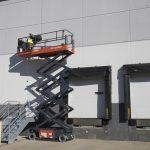In the world of mechanics and engineering, the torque wrench stands as an unsung hero, a tool that quietly plays a pivotal role in ensuring the safety and longevity of machines and structures. Torque wrenches come in various shapes and sizes, and they are designed to apply a specific amount of torque to fasteners like nuts and bolts. In this article, we will delve into the intricacies of torque wrenches, exploring their history, different types, applications, and the science behind the precise art of tightening fasteners.
Chapter 1: A Historical Perspective
To appreciate the modern marvel of the torque wrench, one must first travel back in time. The concept of torque, or rotational force, has been a part of human innovation for centuries. Ancient civilizations such as the Greeks and Romans used simple lever systems to generate torque, although not with the precision of modern torque wrenches.
The first patent for a torque wrench was filed in 1918 by Conrad Bahr, revolutionizing the world of fastener tightening. This early model allowed for precise and controlled application of torque, making it an invaluable tool in the automotive and manufacturing industries.
Chapter 2: Types of Torque Wrenches
As technology advanced, torque wrenches diversified, catering to various applications and industries. There are several types of torque wrenches, each designed for specific tasks:
- Click-Type Torque Wrench: This is perhaps the most common type of torque wrench. It emits a distinct clicking sound when the preset torque level is reached, alerting the user to stop applying force.
- Beam-Type Torque Wrench: A more straightforward design, the beam-type torque wrench relies on a bending beam to indicate torque. When the preset torque is reached, the beam deflects, providing a visual indication.
- Dial-Type Torque Wrench: This type displays torque on a dial, making it easy to read and precise for sensitive applications. It’s a popular choice in laboratory settings.
- Electronic Torque Wrench: Modern technology has introduced electronic torque wrenches, which provide digital readouts and can store data for future analysis. These are ideal for applications that demand extreme precision.
Chapter 3: Applications of Torque Wrenches
Torque wrenches are versatile tools, finding applications in various industries. Some notable uses include:
- Automotive Industry: In the automotive world, torque wrenches are crucial for ensuring the safety of vehicles. They are used to fasten critical components like wheel nuts, cylinder head bolts, and engine mounts.
- Aerospace Industry: In the aerospace sector, precision is paramount. Torque wrenches are used to assemble aircraft components, such as engines, wings, and landing gear, with the utmost accuracy.
- Construction and Structural Engineering: The construction industry relies on torque wrenches to secure the structural integrity of buildings, bridges, and other infrastructures. Bolts connecting steel girders, for example, must be tightened to precise specifications.
- Manufacturing: In manufacturing, torque wrenches are used to assemble products ranging from consumer electronics to heavy machinery, ensuring that parts are tightly and uniformly fastened.
Chapter 4: The Science Behind Torque Wrenches
Torque wrenches operate on a fundamental principle of physics: torque equals force multiplied by the distance from the pivot point. When you apply force to a torque wrench handle, the tool’s design allows you to measure this torque accurately. To ensure the wrench provides the right torque, several factors come into play:
- Calibration: Torque wrenches must be regularly calibrated to maintain accuracy. Over time, they can drift, making periodic calibration essential.
- Angle Measurement: Some applications require not only a specific torque value but also a precise angle of rotation. Advanced torque wrenches come with additional features to measure and control both torque and angle.
- Material Properties: The material properties of fasteners and their interaction with lubricants can influence the torque required for proper tightening.
- Environmental Factors: Temperature, humidity, and other environmental conditions can affect the performance of torque wrenches. Calibration and adjustments may be necessary to account for these variables.
Chapter 5: The Art of Torque Application
Applying the correct amount of torque is indeed a precise art. It involves more than just tightening a fastener to a specific value; it’s about understanding the materials and the mechanics at play. Under-torquing can lead to loose fasteners, while over-torquing can result in damage or failure.
Conclusion
The torque wrench, with its rich history, diverse types, and wide range of applications, embodies the perfect blend of science and art. It stands as a testament to human ingenuity, allowing us to fasten and secure vital components with the precision required to ensure safety and reliability. The “burstiness” in torque application, much like the variation in sentence structure, is an integral part of this process, showcasing the flexibility and adaptability of this indispensable tool. So the next time you tighten a bolt, remember the torque wrench, the unsung hero of mechanics, and the art of applying force with precision.






